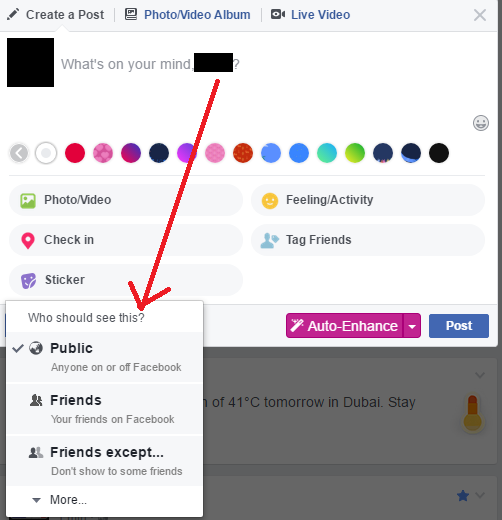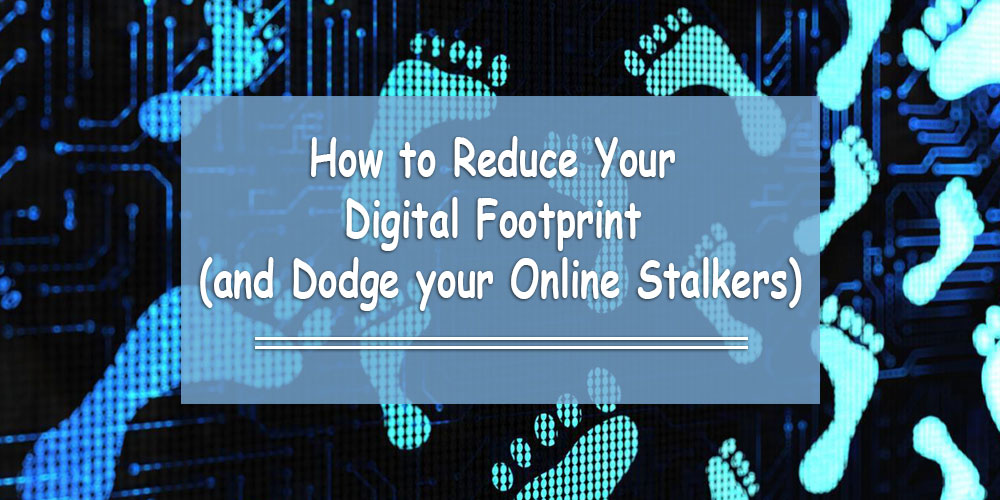Have you ever wondered why you keep seeing the same ads over and over, or why flight ticket prices increase surprising fast if you visit a booking page for a couple of times in few hours? This happens because your online activity is constantly being tracked to show you products or build an urgency to book your ticket immediately. Simply put, you are leaving a digital footprint that companies or individuals can trace for their vested interest and put your security at risk.
You can leave a digital footprint while researching on the Internet, liking a Facebook page, commenting on a social media update, or purchasing something from an online store. Eric Schmidt, the chairman of Google, once said that the Internet should have a delete button to give people a fresh start. It unfortunately doesn’t have one. But there is good news:
You can adopt ways to reduce your digital footprint and keep your stalkers away.
To avoid leaving a digital footprint, it’s important to understand how you leave your tracks in the first place. You leave behind a footprint either ‘actively’ or ‘passively’.
Remember soaring prices of flights tickets? That’s a good example of you unknowingly or passively letting booking portals know that you are urgently looking for flight tickets. This is done through cookies that get downloaded to your system without your knowledge. Websites track old cookies to know you had visited them earlier and might manipulate information they show you, based on your browsing history.
Signing into your email account, posting a comment on social media, or subscribing to a newsletter are ways through which you actively or consciously leave your footprint. Here’s how you can Reduce your Digital Footprint:
Check the Privacy Settings of your Social Media Accounts
 How social media companies use our personal information might be debatable but they are certainly smarter in giving us new privacy settings to safeguard our information from other users.
How social media companies use our personal information might be debatable but they are certainly smarter in giving us new privacy settings to safeguard our information from other users.
Privacy settings give us much better control on what information we make visible for whom. For example, you can group your social media contacts into acquaintances, friends, close friends, family, and other groups, and choose the group that can see a specific post.
Even location settings should be carefully dealt with because your post can let the world know where you are at an exact point of time. This can lead to unpleasant or serious situations, depending on who is stalking you. You can choose to not make your location known, or choose a group that gets to see the post mentioning your location.
Keep your Antivirus Software Updated
 Updated versions of antivirus software are better equipped to identify new kinds of malware and viruses that can stalk your online activity, slow down your system or crash your system. Antivirus companies constantly stay on top of new threats and feed that information into their software. An old version of the antivirus might not be able to identify the latest spyware, therefore it is important to regularly update it.
Updated versions of antivirus software are better equipped to identify new kinds of malware and viruses that can stalk your online activity, slow down your system or crash your system. Antivirus companies constantly stay on top of new threats and feed that information into their software. An old version of the antivirus might not be able to identify the latest spyware, therefore it is important to regularly update it.
Clear your Browsing History (Or Browse in Incognito Mode)
As we mentioned earlier, cookies in your system can give leads to stalkers. While cookies help websites track your activity, other information such as saved passwords, form auto-fill content, and your online history (the pages you’ve visited before) can reveal sensitive information to people who get to access your system. Therefore it’s a good habit to clear your browsing history. Instead, you could select incognito or private browsing mode, depending on your browser type.
Add False Information
You have created an online account visible to the world, but later you decide to keep personal information off the world’s view. Unfortunately, when you try taking off the information, you cannot delete it because the website in question isn’t decent enough like the Facebooks of the world to just let you delete your account. In such a scenario, completely changing your information to a fictitious version will work best for you. If you cannot delete it, simply manipulate it!
Unsubscribe to Mailing Lists
This one is simple. You have subscribed to a newsletter and realize later that it has just added to your spam problem. In such cases, just open the last email you received from the bugging sender, search for the unsubscribe link in the email, and click it.


